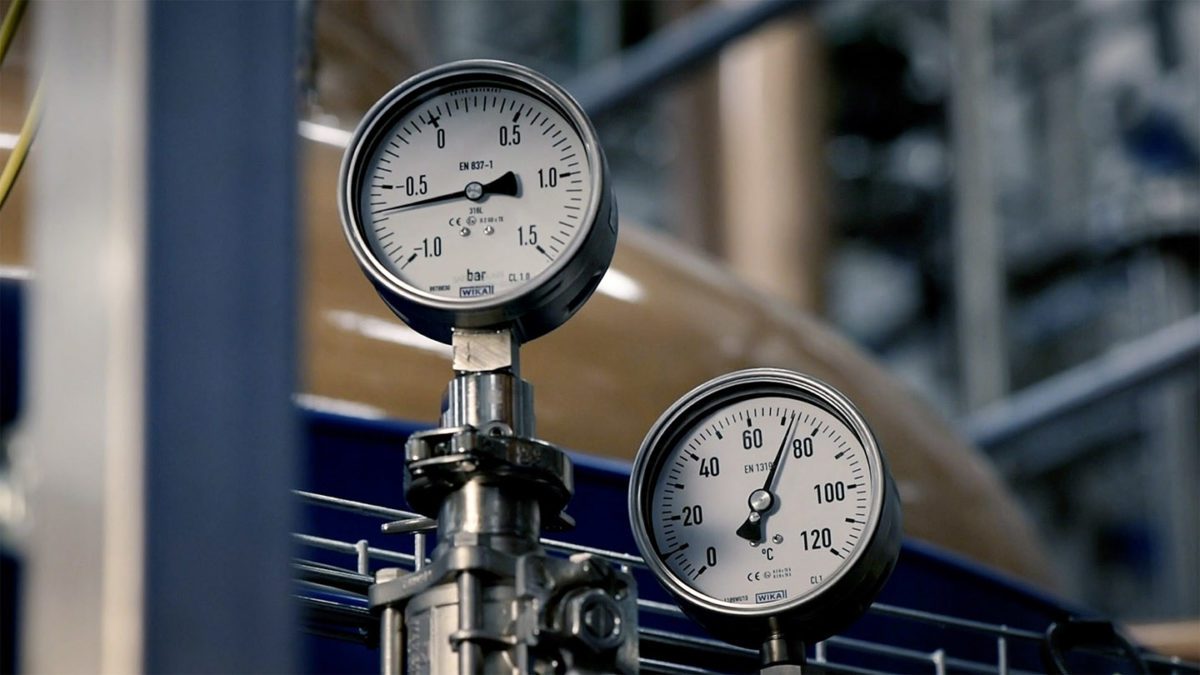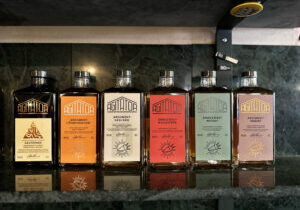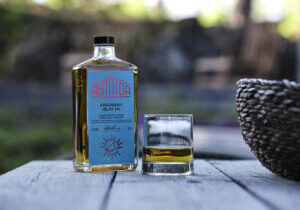
THE REASON WHY IT IS BETTER TO DISTILL IN A VACUUM
The simple explanation
One of the most particular features of the production process at Agitator, is that all spirit is distilled in a vacuum. We have built our stills to make this possible. By lowering the pressure in the stills, we also lower the boiling point. But what is the point of that? Two things: We use far less energy, which is better for the climate. It also makes for a gentler treatment of the raw materials, which means a spirit that is cleaner, with more flavours intact.
Now, if you only wanted a short and simple explanation of why we are so outrageously proud of our unique vacuum distillation, then you need read no further. But if you crave a more thorough explanation of how this works, then please read on.
What is distillation?
Distillation is a process of vaporisation through which different substances in a solution may be separated, due to the fact that they have different boiling points. In our case, we are talking about ethanol and water, having a boiling point of 78,4°C and 100°C, respectively. Our solution, in the form of a mash containing alcohol as well as water, has a boiling point somewhere between these two extremes. It all depends on the alcohol content of the solution. The higher the alcohol content, the closer it is to the boiling point of ethanol.
Vapour pressure
You must also understand the meaning of vapour pressure. This is the pressure that the liquid is subjected to by its own vapour. The pressure is created by the evaporation of the liquid and is a measure of its volatility. The higher a vapour pressure a liquid has, the more volatile it is. By adding heat, we increase the vapour pressure of the liquid. Thus, the vapour pressure depends on which liquid we have, and on the temperature of this liquid. When the vapour pressure of the liquid equals that of the ambient pressure, the liquid starts to boil. This means that we can alter the boiling point of the liquid by altering the ambient pressure.
Vacuum distillation
When vacuum distilling, we lower the ambient pressure, i.e. the pressure within the still. This, in turn, means a lower vapour pressure is needed for the liquid to boil. In our particular case, we lower the pressure to 0,3 bar(a) in the mash stills, and 0,8 bar(a) in the spirit stills. This translates into about 30°C and 5°C respectively, in lowered boiling point.
The Result:
1. Lower energy consumption
By lowering the boiling point of the liquids we can also lower the energy consumption of the plant. The energy for distillation is provided by the hot water from the district heating network. We use the hottest water to boil the spirit stills, and the residual heat from these is then used for the wash stills. Taken together, this provides us with world-class energy efficiency.
2. Better spirits
Due to the lower temperature in the stills, proteins do not coagulate as they would in a conventional still, which means that the equipment stays cleaner. The vacuum system also makes it easier to handle frothing when distilling. As a rule, frothing is rare in our stills, since the gases bound in the mash are drawn out when the stills are filled. The product benefit is a cleaner spirit. We boil more gently and the occurrence of those flavour components created by increased heat (i.e. Maillard reaction), such as burnt or caramel notes, is diminished. Thanks to this cooler process, we can produce a spirit that full of flavour, clean and with a light profile. Less fusel alcohol is produced, enabling us to produce a more complex spirit.









